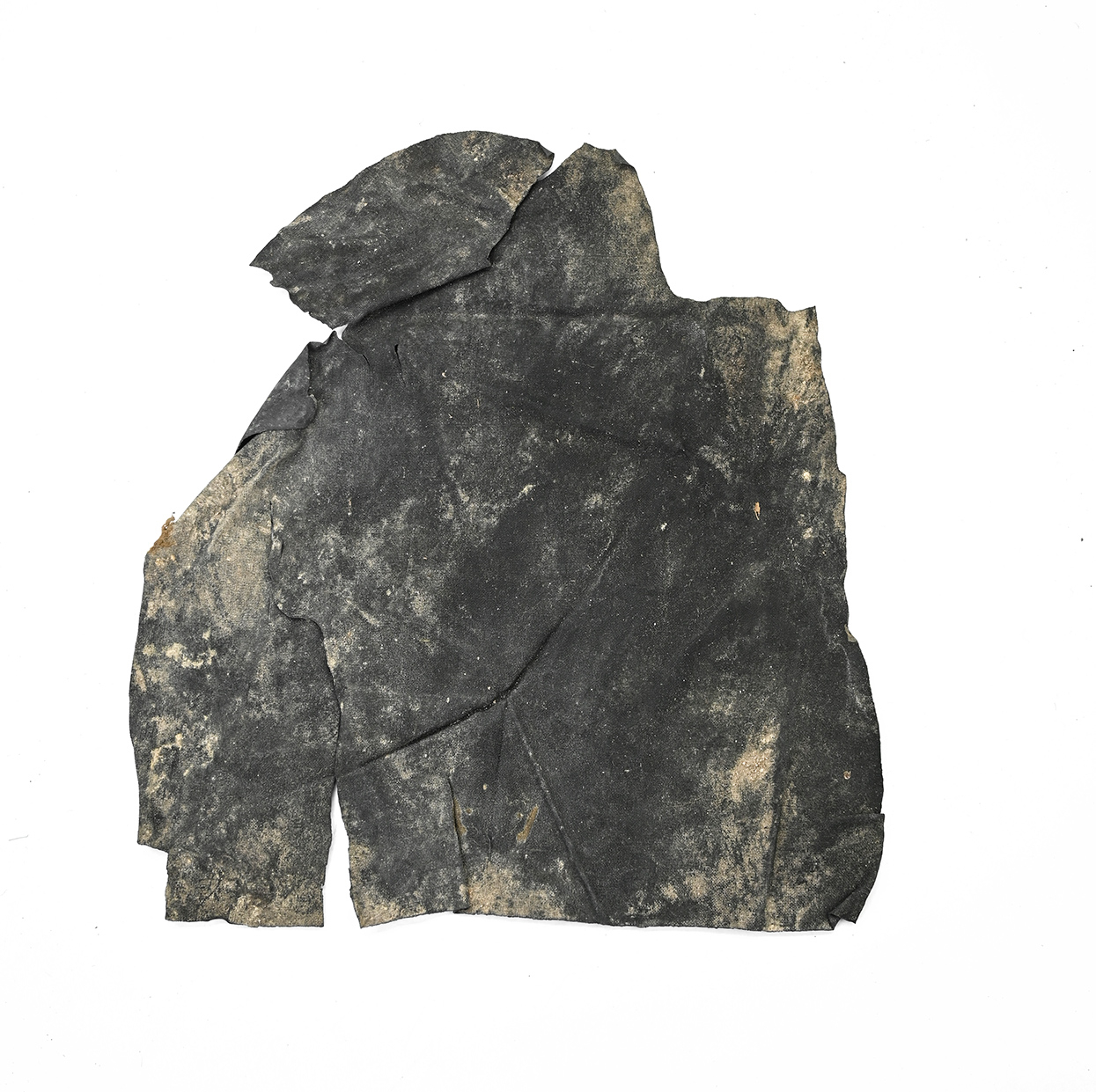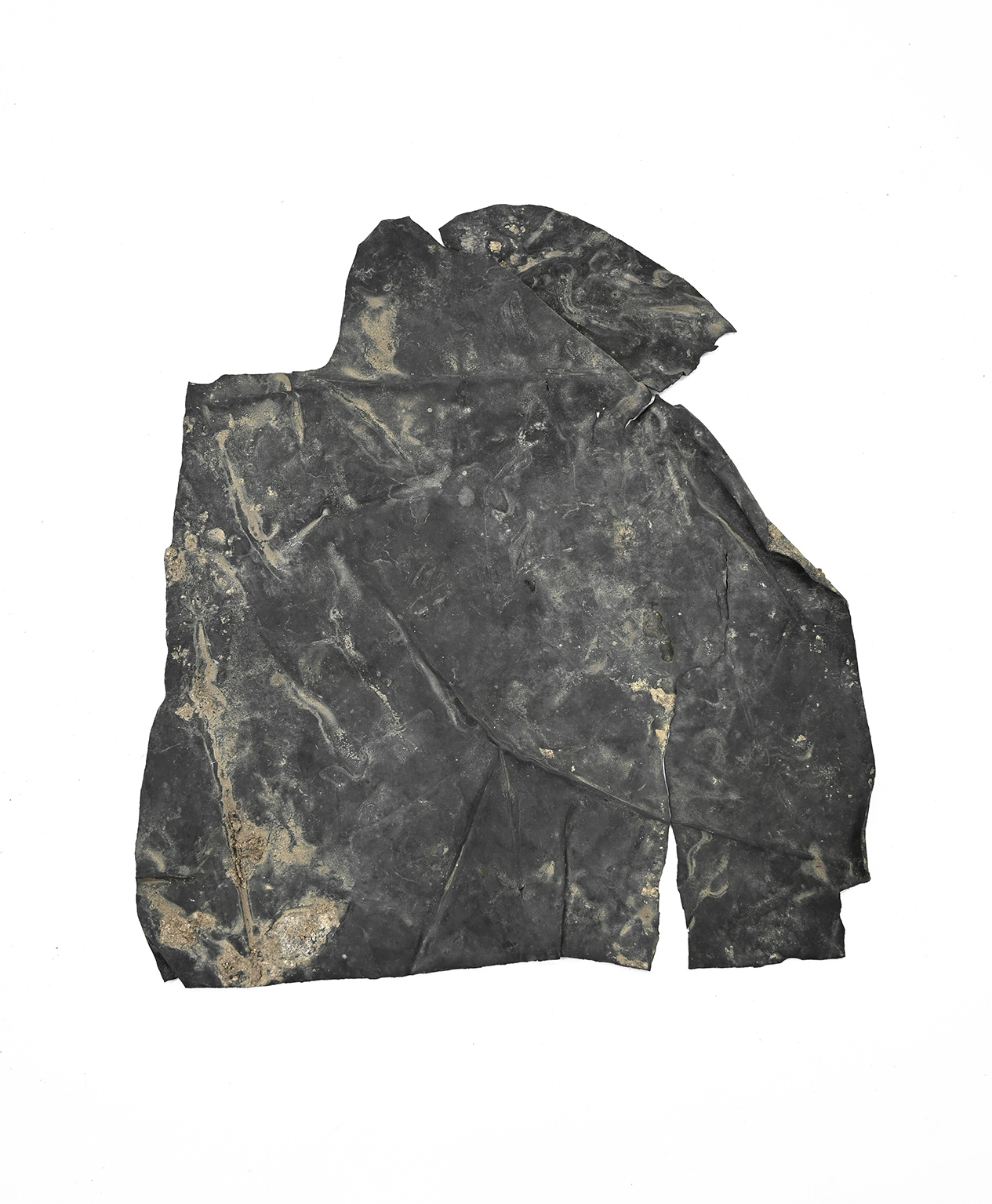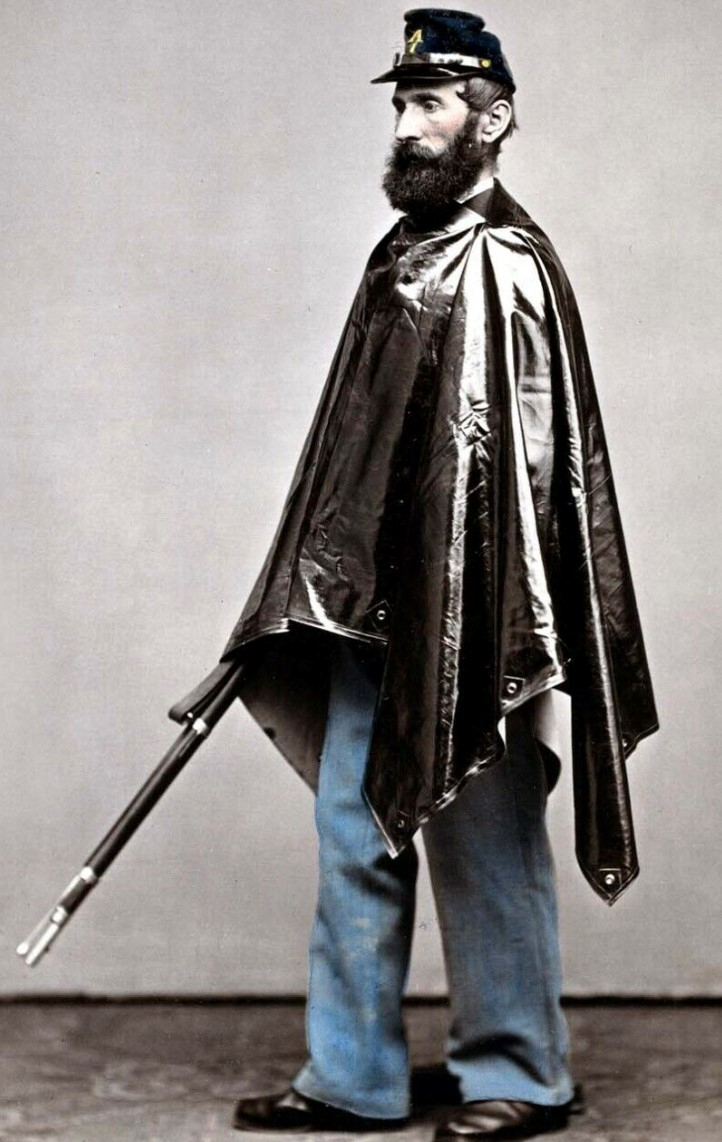site search
online catalog
SCARCE CIVIL WAR PONCHO OR “GUM BLANKET” FRAGMENT

Hover to zoom



$95.00
Quantity Available: 1
Item Code: 1052-628
Shipping: Determined by Method & Location of buyer
To Order:
Call 717-334-0347,
Fax 717-334-5016, or E-mail
Civil War period ponchos and rubber blankets are extremely scarce despite being widely used and valued by troops in the field. They were so useful at home as to be used up by veterans and their families and many thousands of surplus ones were finally sold off in the 1880s as cheap raingear that could be discarded once worn out. This scarce fragment comes from either a poncho or blanket (often referred to as “rubberized,” “gum,” or “painted” blankets.) The significant difference being the presence of slit for the head in the poncho, with both usually having brass grommets on the edges for stringing together form a waterproof tent, or in the case of the blanket to form an improvised rainproof coat by forming sleeves and a hood. This comes from the excavations at Fort Pembina in North Dakota, an army post garrisoned from 1870 to 1895, and supplied with typical Civil War uniforms and gear as the army used up its vast stocks of wartime supplies. The anaerobic conditions of the dig have yielded leather gear and even cloth in remarkable states of preservation. This shows wrinkling, tears, dirt, and grayish-white stains but is displayable.
Rubber blankets and ponchos were recommended private purchases in early-war handbooks for budding soldiers, issued by some states to their early volunteers, and finally adopted in November 1861 by the US government, which had initially adopted the poncho only for mounted troops to replace the long “talma,” but left foot troops reliant on their cloth overcoats for waterproof clothing and made no provision for a ground cloth. Their usefulness, however, could not be denied. By war’s end 1,703,401 rubber blankets and 1,160,133 ponchos had been supplied on contract, and a large, but unknown, number purchased privately or supplied by the states. Their very utility in military and civilian life, and problems of storage has made any example scarce. Hardening of the rubber, leading to crazing and cracking led the government in the 1880s to sell off as many surplus ponchos and blankets as fast as they could, supplying a ready civilian market for cheap raingear, which would be discarded once worn out.
Situated in the Red River Valley in North Dakota near the Canadian border, Fort Pembina was established in 1870 and in operation until 1895. Trading posts existed earlier in the area as part of the fur trade, and the first U.S. military post there was temporary- manned by a detachment of Minnesota troops in 1863-1864 following the 1862 Sioux uprising. In March 1870 a new fort was established south of the Pembina River and about 200 yards west of the Red River, completed by July and named in honor of Gen. George H. Thomas. The name was changed to Fort Pembina in September and the initial garrison consisted of two companies of the 20th US Infantry. Their main duty was to provide security for settlers worried about Sioux returning south from Canada, but the troops were more occupied with escorting boundary surveys along the Canadian border and preventing Fenian raids heading north into Canada.
The fort included enlistedmen’s barracks, officers’ quarters, guard house, ordnance storehouse, company kitchen, root house, laundress’s quarters, quarters for civilian employees, hospital and hospital servant’s house, a barn for the “hospital cow,” quartermaster and commissary offices and storehouse, stables, wagon shed, etc. The garrison reached peak strength in 1878 af 200, but the average was about 125 enlisted men and 8 officers. An October 1885 return listed 97 men, 2 field pieces, 1 mountain howitzer, 100 rifles, 19 pistols, 23 mules, and 9 wagons. By 1890 the post had just 23 men, and after an 1895 fire destroyed some 19 buildings it was decided to abandon the fort rather than rebuild, the last detachment left in September. The property was turned over to the Interior Department and later sold in 1902.
This is in very good condition for an excavated piece, displayable, and has a tight provenance to an Indian War post garrisoned by the U.S. army for a well-defined period that encompasses the 1870s and 1880s Indian Wars and would also display well as a Civil War piece. [sr] [ph:m]
~~~~~~~~~~~~~~~~~~~~~~~~~~~~~~~~~~~
THIS ITEM, AS WITH ALL OTHER ITEMS AVAILABLE ON OUR WEB SITE,
MAY BE PURCHASED THROUGH OUR LAYAWAY PROGRAM.
CLICK HERE FOR OUR POLICIES AND TERMS.
THANK YOU!
Inquire About SCARCE CIVIL WAR PONCHO OR “GUM BLANKET” FRAGMENT
Most Popular
Historical Firearms Stolen From The National Civil War Museum In Harrisburg, Pa »
Theft From Gravesite Of Gen. John Reynolds »
Selection Of Unframed Prints By Don Troiani »
Fine Condition Brass Infantry Bugle Insignia »
Large English Bowie Knife With Sheath 1870’S – 1880’S »
Imported (Clauberg) Us Model 1860 Light Cavalry Officer's Saber »
featured item
CIVIL WAR INFANTRY SERGEANT’S FOUR-BUTTON FATIGUE BLOUSE
This is a very good example of a very rare Civil War uniform: the 4-button blouse originally designated for “fatigue” wear in the regular army, but which quickly became the standard field uniform in the Union army, worn by enlisted men in all… (1268-268). Learn More »


